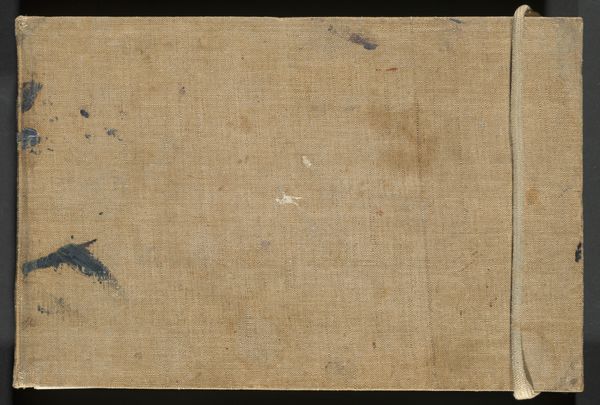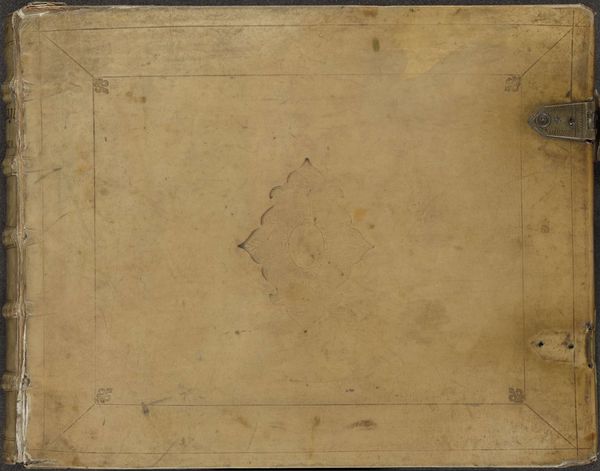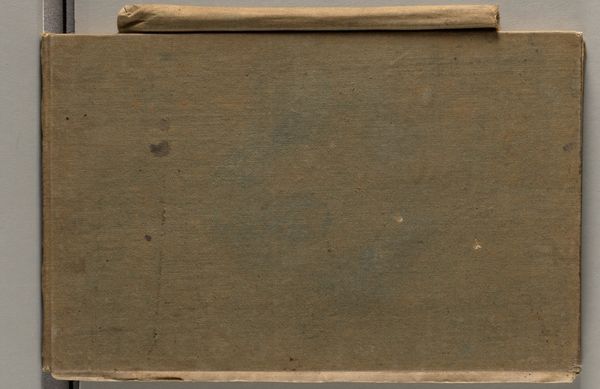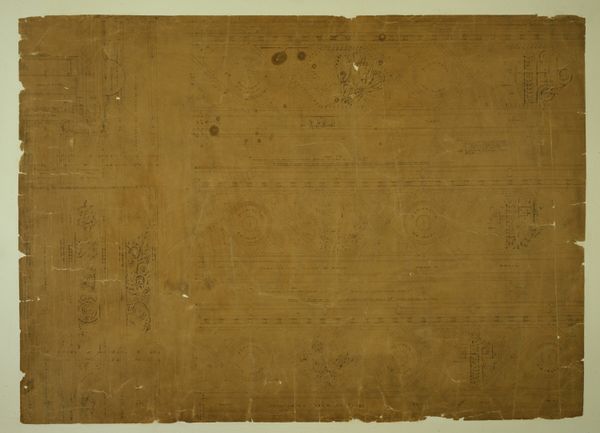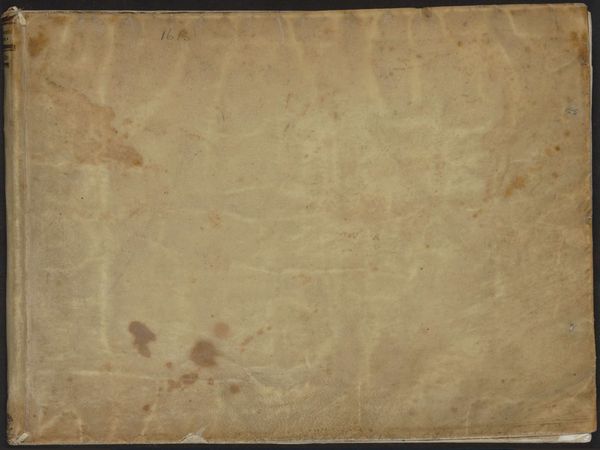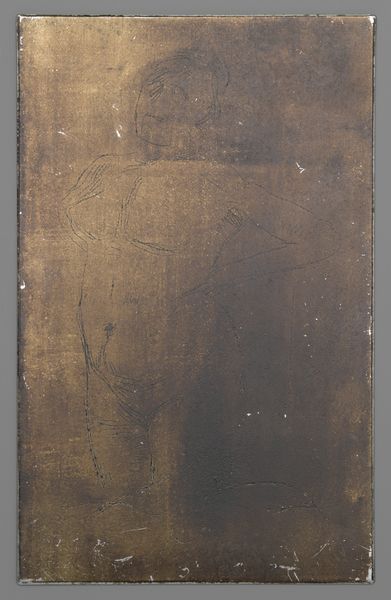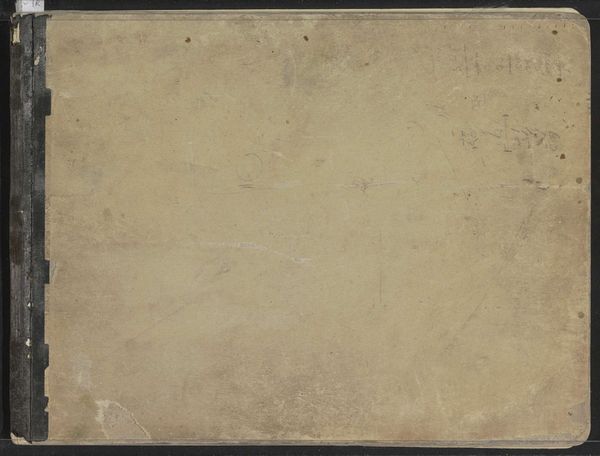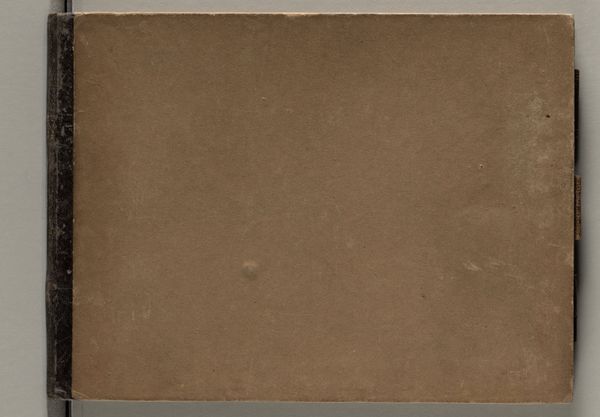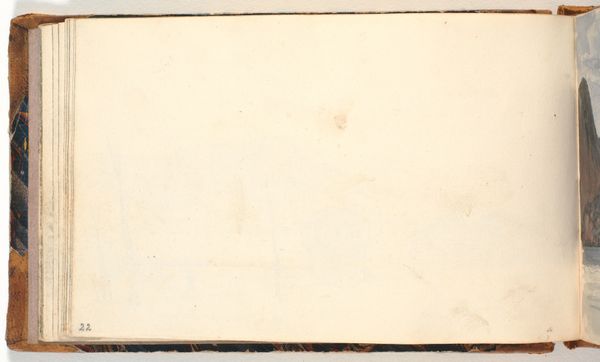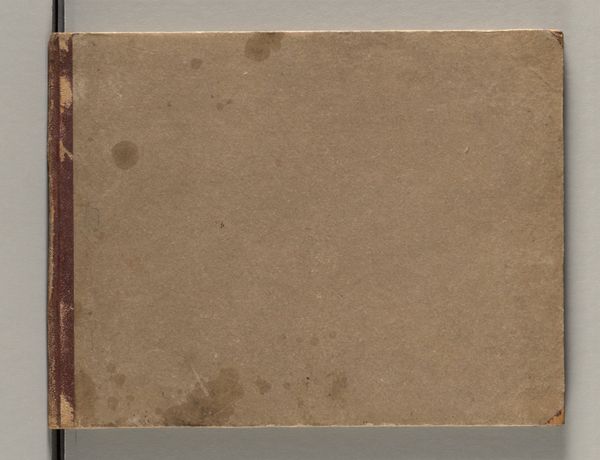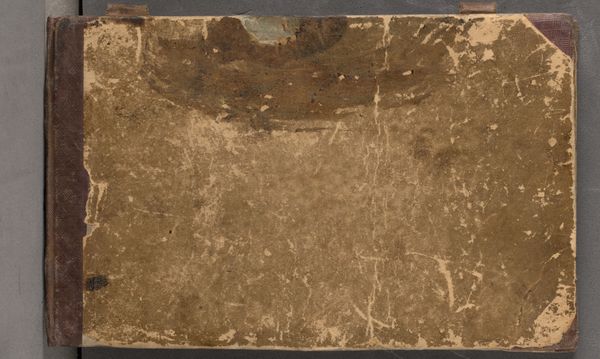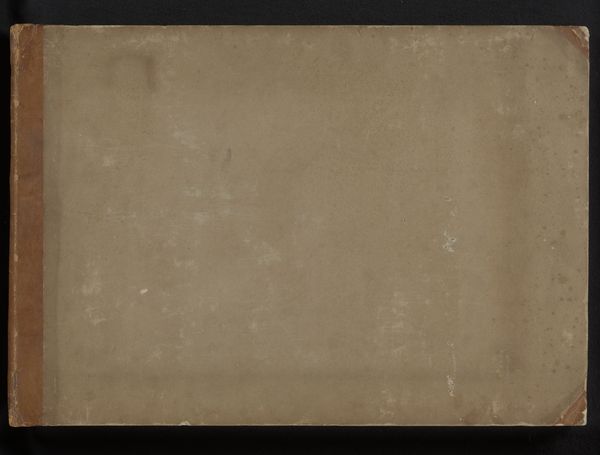
drawing, paper
#
drawing
#
paper
Copyright: Public Domain
Curator: There’s something inherently intriguing about a closed sketchbook. This particular example, simply titled "Skizzenbuch," comes to us from Johann Nepomuk Rauch, dating back to 1844-1845. It’s a drawing executed on paper, and we're fortunate enough to have it here at the Städel Museum. Editor: My immediate impression is one of containment. The neutral, almost worn surface is austere, and hints at concealed creativity. It invites speculation. What lies beneath this placid exterior? Curator: Indeed! The visual symbols here might be less overt than in, say, a finished painting, but the "Skizzenbuch" itself becomes a symbol—a repository of the artist's thoughts, processes, and maybe even secrets. The lettering “J. N. R.” emblazoned on the front cover adds to this feeling; it feels intimate. Editor: Agreed. Technically speaking, the muted earth tones—the umbers and siennas—lend the work an understated elegance. The slight imperfections, perhaps wear and tear from the artist’s studio, actually enhance its aesthetic appeal. The cover creates a formal frame of implied depth to entice one in; there must be unseen, untold art in-between these covers. Curator: These little accidents can certainly build its allure, yes! Beyond aesthetics, it also represents cultural memory, hinting at the broader artistic and social milieu in which Rauch was working. Perhaps within these pages are visual echoes of the Biedermeier period. Editor: It’s interesting you say that. As for period, the spine has been treated differently, with what seems to be a different, linear texture; if the imagery on the inside were anything but congruent with that style and treatment, one could be certain Rauch rebound it much later to fit his own formal vision. Curator: It would be enlightening to be able to see the progression of ideas, how he moved from initial sketches to more refined compositions. It's almost like glimpsing directly into the artist's mind. The cover itself creates this anticipatory feel, inviting one to fantasize what’s actually in store behind that brown shell. Editor: Precisely, to deconstruct this object fully would demand that its contents and internal order and composition would be studied, understood, decoded as one, whole piece. Until that work is done, it is a closed volume of lost dreams!
Comments
No comments
Be the first to comment and join the conversation on the ultimate creative platform.
